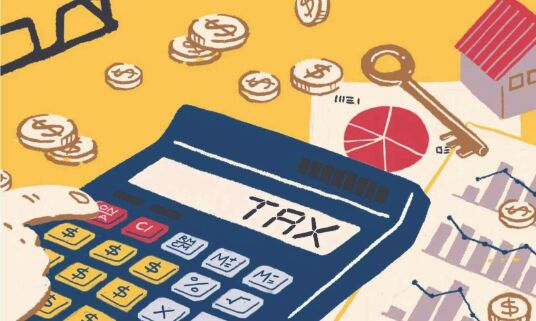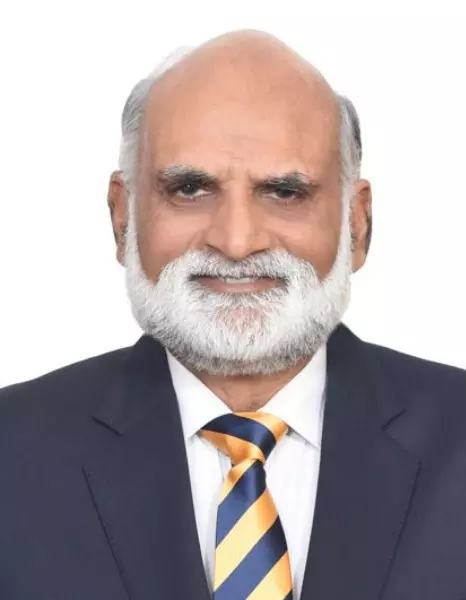For a thriving economy
A simpler tax structure is required to increase compliance which in turn will generate more tax-revenue to be used for developmental works

The year 2022 will mark 75 years of India's glorious independence. India plans to celebrate this milestone with an aim to create a new and prosperous India. To my mind, the first step to building a prosperous India would be where every citizen is a part of this nation-building exercise. Our PM has rightly stated that economic transformation cannot happen without public participation and that development must become a 'Jan Andolan'. Therefore, it will be important that citizens fulfil their obligations and that government policies and its tax system be at the vanguard of this transformation.
As per recent government data, only one per cent of the Indian population pays income tax and declares earnings above the exemption limit. It is unfortunate that in a country of 130 crore Indians, only 1.5 crore pay income taxes and millions evade taxes. Empirical studies document a strong relationship between high tax rates and high tax evasion. Unfortunately, this has over the years proved to be at the core of a low tax base in our country. Analysis on the data released by CBDT (Central Board of Direct Taxes, GoI) for the assessment year 2018-19 suggests that nearly two-thirds of personal income taxes in the country were paid by the richest 5 per cent and nearly half of the total corporate taxes were paid by just the top 1 per cent of companies. Thus, it is evident that the burden of taxes in India are on a small pool of taxpayers. Hence, to boost its economy, the government must take adequate steps to widen its tax net and check evasion.
Not only the direct tax, but indirect tax too is struggling with incidents of tax evasion. According to finance ministry reports, the central GST (Goods and Service Tax) authorities have detected evasion of Rs 70,206 crore between July 1, 2017 launch of GST and January 2020. India has four non-zero tax slabs 5, 12, 18 and 28 while many countries have adopted a single tax rate while implementing GST. A World Bank paper of 2018 found India's GST relatively more complex with its high and multiple tax rates when compared with 115 other countries, where 49 have one rate, 28 have two and only five countries, including India, use four non-zero rates. Commenting on these, the paper said high and multiple rates make the system complex, add to the cost of compliance, and incentivise tax evasion. If we examine the tax regime of Singapore — an important finance, commerce, and trading hub of Asia — we will see that it is simple, attractive, and efficient. With GST at 7 per cent and personal tax (0-22 per cent), Singapore's tax system is a fine balance that promotes commerce and ensures that sufficient revenue is collected to meet the country's social and economic objectives. Due to its reasonable and simplified tax policies, it also rates high on tax compliance.
According to the International Monetary Fund (IMF), India is projected to grow at 11.5 per cent this year making it the only major economy of the world to register double-digit growth in 2021. India too is pushing for the envisaged USD 5 trillion economy by 2024-25. To this end, revenue collections will play a key role to attain the much-anticipated growth trajectory. Ultimately, it is a well-established principle that enforcement machinery can deliver only with limited success. It is self-compliance that can result in a quantum leap for our exchequer, and this can only be done by disincentivising the motive to evade tax. Positive actions in this area will undoubtedly have a lasting impact for generations to come.
In India, the Modi government has taken several steps to make large scale structural changes emphasising the need for a simple tax system. It has shown that it can think out of the box and be innovative in its approach. The announcements by the Finance Minister in the budget this year clearly echo the need to shift focus to compliance than a change in rates — a decisive way forward which demonstrates a stable tax structure without tinkering with the rates.
Another area where Modinomics can focus on is the quantum of tax collection rather than the rate of taxes. For years, India has struggled to increase its tax to GDP ratio and the only way to improve it is by ensuring that all citizens pay their share of taxes. Substantial numbers can be bought into the tax net by following the age-old Manu Smriti and Arthashashtra teachings where the king collects tax without the tax-payer feeling the pinch. This will result in revenue buoyancy which will help government coffers to grow, creating a pool of resources for development work, generate jobs in our country, ultimately creating a virtuous cycle. This most certainly will pave the way for a thriving national economy, drive growth and realize the vision of a prosperous India.
The writer is Chairman, FICCI CASCADE and Senior VP, Corporate Affairs, ITC Ltd. Views expressed are personal



